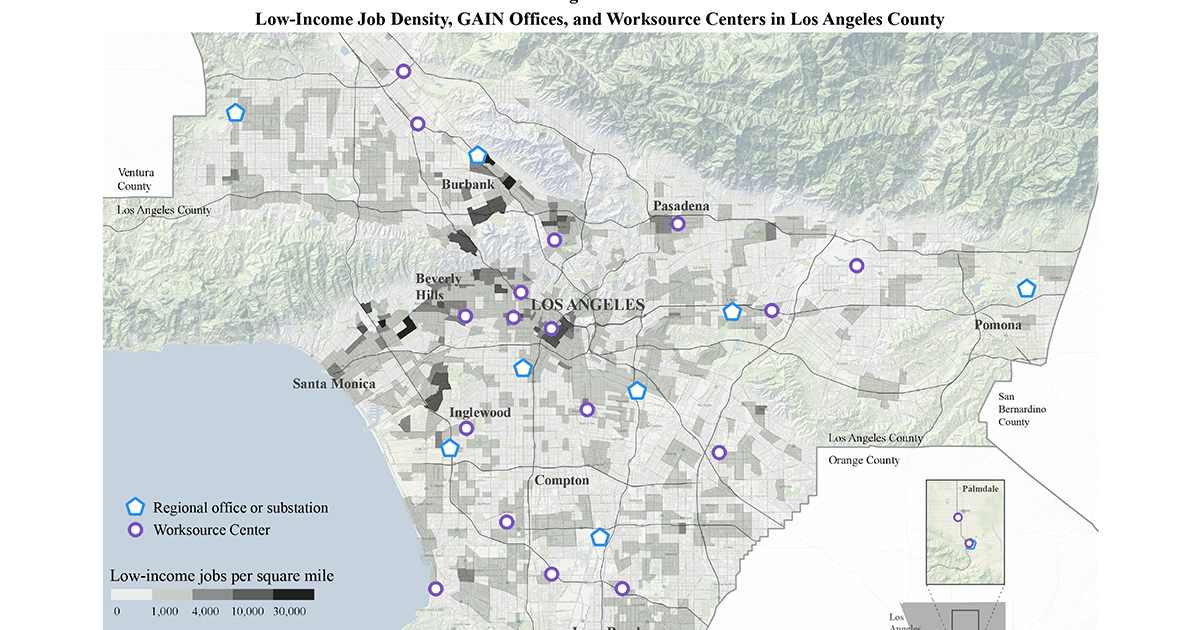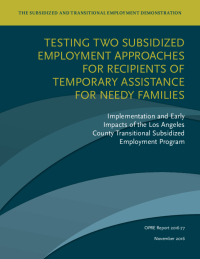Testing Two Subsidized Employment Approaches for Recipients of Temporary Assistance for Needy Families
Implementation and Early Impacts of the Los Angeles County Transitional Subsidized Employment Program

Securing unsubsidized employment in a competitive labor market can be difficult for job seekers with limited education or work experience, especially if they are caring for young children, doubly so if they are single parents. Some public assistance programs — state Temporary Assistance for Needy Families (TANF) programs, for example — attempt to make recipients more employable by temporarily providing subsidized employment to people who cannot find them in the regular labor market, using public funds to pay all or some of their wages. Subsidized jobs can be designed to teach participants basic work skills, give them work experience that can be used on future résumés, or help them get a foot in the door with employers. Past research has found mixed results regarding these programs’ ability to affect participants’ employment rates or earnings in the long term, or the rates at which they receive TANF benefits.
This report presents implementation findings and interim impact results (after one year) from a random assignment evaluation of subsidized employment for TANF recipients in Los Angeles County. The study examines the impact of two distinct approaches to subsidized employment. The first, Paid Work Experience (PWE), subsidizes the wages of individuals placed at nonprofit or public-sector employers. The second, On-the-Job Training (OJT), offers wage subsidies to for-profit, private-sector employers who agree to place employees onto their payrolls after an initial two-month tryout period; if they do, the wage subsidies can continue up to an additional four months.
Findings from the report include the following:
-
The two approaches had substantially different subsidized employment placement rates. Forty-two percent of OJT participants were placed in subsidized employment, compared with 80 percent of PWE participants.
-
PWE placements lasted an average of more than 64 days longer than OJT placements. Compared with OJT placements, PWE placements were far more likely to continue beyond the second month, the time when OJT participants were to move onto employers’ payrolls. Both types of placements were designed to last up to six months.
-
Members of the control group received other types of welfare-to-work services. Members of the control group were almost as likely as members of the program groups to receive welfare-to-work services other than subsidized employment. The control group was more likely than either of the program groups to be involved in education.
- Both PWE and OJT group members had higher rates of work and earnings than control group members. In the first year after random assignment, both PWE and OJT group members were more likely to work, worked more quarters on average, and had higher average earnings than control group members. These differences were largest among sample members who had not been employed in the year before random assignment. The differences also declined as people left subsidized jobs. There were only a few modest differences between the program participants and control group members in other outcomes such as TANF receipt or overall well-being. A future report will present longer-term impacts (after 30 months).






